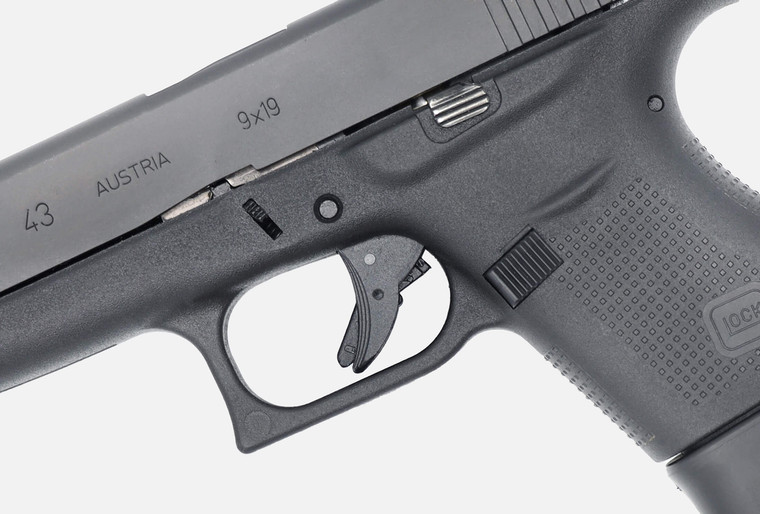3 Reasons You Should NOT Upgrade Your Gun's Trigger
Posted by Warrior Poet Society on Mar 4th 2022
When it comes to shooting speed and accuracy, everyone wants a competitive edge. The question though is whether upgrading your pistol with a custom trigger is really the best option for your purposes. Maybe in a later blog post I'll address the best trigger upgrades, but for the purposes of this article I want to talk about why upgrading your trigger does not actually make you a better shooter.
Don't Upgrade Your Trigger Reason #1: You Still Don't Know the Basics
Maybe you think that by buying a "better piece of gear" you'll suddenly become a proficient shooter. While this might provide some improvement at the firing range, it likely won't improve your reflexes and decision-making skills in a moment of stress.
It's kind of like getting a calculator to become better at math. By using a calculator, you might perform some activities more quickly, but the crutch of the calculator is actually weakening your mind. It might actually be covering up an inability to do the basics of mathematics.
Don't Upgrade Your Trigger Reason #2: You Haven't Mastered the Tools
Typically my pistols are totally stock–meaning they have only what the manufacturer sent from the factory. There's a reason for this. The stock trigger on a gun is engineered to give a user safe, accurate and reliable performance under a variety of circumstances. Gun manufacturers are accounting for range practice, tactical training and, of course, operation in dangerous and stressful situations.
In these situations, an inexperienced user (and even the experienced ones) is more likely to grip everything more tightly and maybe unknowingly allow finger creep into the trigger well. The heavier stock trigger is less likely to discharge a round before intended, meaning you have more safe control over the weapon.
Except for a few pistols, I keep everything stock because this is what I've pursued mastery with for years and years. I've found that with training and repetition I can quickly and accurately deploy and fire any of my pistols.
If you haven't had to train and practice and work for the ability to properly and quickly use your firearm, it's very possible you might be a loose cannon on a light and speedy custom trigger.
Don't Upgrade Your Trigger Reason #3: You Haven't Been Properly Trained
Mastery requires practice, of course, but if you're practicing the wrong things then you're hardwiring bad habits that could come out at the wrong time.
Modifications to your pistol might give you instant gratification when you're shooting at stationary paper at the range, but they won't cover up your lack of proper training in other circumstances. In this way, an upgraded trigger will stunt your growth.
As an instructor, I should be able to go to anyone's gun and run it without trouble. And I want my students to be able to pick up any pistol and do the same thing without relying on the crutch of modifications.
What We Talk About When We Talk About Triggers
Let's talk about how a trigger is built. A normal defensive trigger, whether it's a Smith & Wesson, M&P , FN, CZ or Glock 19, or whatever is generally built with a pre-travel component (also know as the mush, the slack, etc.) and then a trigger component.
In theory, the lighter and shorter the pre-travel, the more accuracy. However, as I mentioned before, there's a number of problems with light triggers for defensive carry. The problem is stress.
The problem is you don't want to accidentally or negligently discharge a round before you need to. So what gun manufacturers have done is they built in this space.
It's like the bumper of your car. It stops something before it gets to the actual car body. The pre-travel allows you to wade into the water a few millimeters or so before the trigger pull.
For defensive carry for instance, when the fear hits you, when the stress amps up through the ceiling, what can very, very easily happen is you can go to touch your trigger, and because you're all tensed up or fearful, you can touch that trigger and pull straight through and actually break the shot before you even realized your finger was on the trigger.
Furthermore, having a really light trigger when pointing down at different things, depending on your carry style, that can just be a little bit... disconcerting. Anyway, I want to be able to kind of wade into my trigger. So typically for competition, having a lighter, shorter trigger that's kind of flattened out like this, can be a really good thing. But short of competition, for defensive carry, I like to be able to wade into my trigger a little bit. The normal stock trigger is fantastic for this.
When it comes to trigger pull, it's more important than ever to Train Hard. Train Smart. And don't try to cover up a lack of training with a tool you don't understand.

